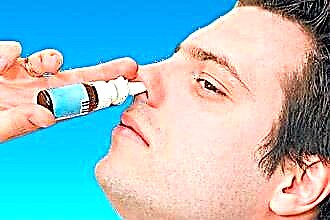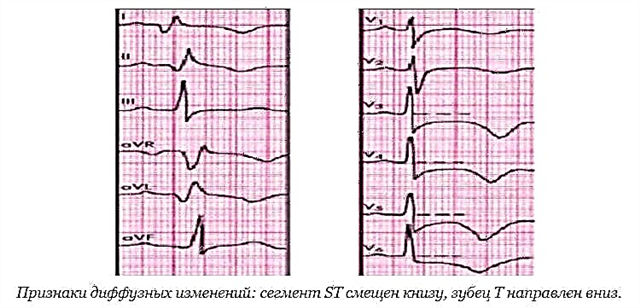Congestion and pain in the ear are signs that signal the presence of pathological changes in the state of the organ of hearing. The provocateurs of uncomfortable sensations are most often vascular diseases, infectious lesions of the mucous membranes in the middle and outer ear, barotrauma and poor blood supply to the auditory nerve. Ignoring the problem can lead to the development of autophony and irreversible hearing loss.
 Symptomatic treatment of pathology without determining the causes of its occurrence leads to the development of complications such as sensorineural hearing loss, meningitis, labyrinthitis and mastoiditis.
Symptomatic treatment of pathology without determining the causes of its occurrence leads to the development of complications such as sensorineural hearing loss, meningitis, labyrinthitis and mastoiditis.
Before using medications, it is advisable to be examined by an ENT doctor, who, at the stage of differential diagnosis, will be able to determine in which department of the auditory analyzer there were violations and how they can be eliminated.
Causes
Why does the ear hurt and is blocked? In most cases, discomfort occurs due to the development of pathogenic flora in the tissues of the auditory analyzer. Pathogens enter the ear cavity through the Eustachian tube during the development of rhinitis, sinusitis, sinusitis, or by the tympanic route, i.e. through the external auditory canal if the tympanic membrane is damaged. The main provocateurs of pathological changes in the soft and bone structures of the organ of hearing include:
- tubotympanitis (eustachitis);
- catarrhal (serous) otitis media;
- myringitis (inflammation of the membrane);
- sinusitis;
- sinusitis;
- tonsillitis;
- arterial hypertension;
- hypotension;
- sulfur plugs;
- moisture in the external auditory canal;
- impaired blood microcirculation;
- purulent and diffuse otitis media;
- barotrauma and aerootitis;
- inflammation of the auditory nerve.
Important! Incessant shooting pains in the ear, coupled with hearing impairment, may indicate the development of sensorineural hearing loss, which is amenable to drug treatment only at the stage of acute development.
Clinical picture
Ear congestion is a symptom that accompanies most types of ear ailments. That is why it is possible to determine the type of pathology only by additional clinical manifestations:
- otitis media: headaches, otorrhea, fluid transfusion in the ears, hyperthermia;
- labyrinthitis: dizziness, spatial disorientation, nausea, pain radiating to the temple, back of the head and teeth;
- tubotympanitis: painful sensations when swallowing saliva, hearing impairment, autophony, nasal congestion;
- sulfur plugs: hearing loss, a feeling of pressure on the ear membrane;
- cardiovascular diseases: heart palpitations, a feeling of pulse in the ears, congestion in both ears at once;
- sensorineural hearing loss: shooting pains, progressive hearing loss.
What to do if the ear is blocked and it hurts? Surely, only a specialist will be able to determine the cause of the problem after examining the patient. If the pain does not subside within 3-4 days, but only intensifies, do not postpone the visit to the otolaryngologist.
Possible complications
Most often, with the development of ear diseases, perforation of the ear membrane is observed. In the absence of constant suppuration, the perforated holes are quickly healed, due to which normal hearing acuity is restored. However, in the case of penetration of pathogenic flora into the middle ear cavity, more serious complications may arise. Untimely treatment of inflammatory processes in the auditory analyzer is fraught with such consequences as:
 conductive hearing loss - auditory dysfunction resulting from damage to parts of the sound-conducting system: eardrum, ear labyrinth, auditory bones;
conductive hearing loss - auditory dysfunction resulting from damage to parts of the sound-conducting system: eardrum, ear labyrinth, auditory bones;- perceptual hearing loss - hearing impairment caused by damage to the tissues of the sound-receiving apparatus: the central section of the auditory analyzer, hair cells, ear labyrinth, vestibular cochlear nerve;
- autophony - increased perception of one's own voice associated with the accumulation of serous effusions in the tympanic cavity or myringitis;
- mastoiditis - destructive changes in the bone structures of the mastoid process, provoked by infectious inflammation in the middle ear cavity;
One of the most severe complications is perceptual (sensorineural) hearing loss, which is characterized by damage to the auditory nerves that cannot be restored.
Diagnostics
The effectiveness of therapy is determined by the correctness of the diagnosis, which should only be carried out by a qualified specialist. What to do if your ear is blocked and it hurts? To determine the main causes of anxiety symptoms, the patient must undergo the following types of examination:
- fluoroscopy - an examination in which a specialist assesses the condition of the bone structures of the organ of hearing according to the received X-ray images;
- audiometry - a method for determining the threshold of auditory sensitivity, which allows you to establish the type and degree of development of hearing loss;
- impedance measurement - an objective assessment of the working capacity of the middle ear, during which the degree of mobility of the auditory ossicles is determined;
- biopsy - microscopic examination of the discharge from the middle ear cavity, due to which the type of causative agent of an infectious disease is determined.
As a rule, in the initial stages of the development of infectious diseases, conservative and physiotherapeutic treatment is used. Surgical intervention is required only at the stage of development of serious complications that entail irreversible changes in the bone and soft structures of the hearing organ.
Otitis media treatment
 Medication for infections can only be prescribed by an otolaryngologist. Depending on the type of causative agent of inflammation, antibiotics, antifungal and antiviral agents with an analgesic and anti-inflammatory effect can be used to eliminate the pathogenic flora. Treatment of pain and congestion in the ear is carried out according to the following scheme:
Medication for infections can only be prescribed by an otolaryngologist. Depending on the type of causative agent of inflammation, antibiotics, antifungal and antiviral agents with an analgesic and anti-inflammatory effect can be used to eliminate the pathogenic flora. Treatment of pain and congestion in the ear is carried out according to the following scheme:
- removal of purulent secretions and sulfur in the external auditory canal;
- drainage of the tympanic cavity in the middle ear;
- treatment of the mucous membrane of the middle ear and nasopharynx with an antiseptic solution;
- taking symptomatic anesthetics and anti-inflammatory drugs;
- the use of systemic antibiotics, antiviral agents or antimycotics.
During the use of antibacterial drugs, the dosage recommended by a specialist must be observed. Otherwise, the risk of a decrease in local immunity and a relapse of the disease increases.
Physiotherapy
Physiotherapy procedures are one of the main components of the complex treatment of ear diseases. They help to shorten the regeneration period of the affected tissues and to restore the earliest function as soon as possible. At the stage of regression of inflammatory processes in the organ of hearing, the following types of procedures can be used:
- electrophoresis - the introduction of drugs into the mucous membrane of the tympanic cavity by means of a constant electric field;
- UFO is a therapeutic and prophylactic procedure aimed at accelerating the regeneration processes of affected tissues under the influence of UV light waves;
- pressotherapy - restoration of normal blood circulation in the ear, due to the effect of compressed air on the tympanic membrane;
- UHF - treatment of inflammation in the organ of hearing with electromagnetic waves of supersonic frequency.
Physiotherapy helps to restore normal blood circulation, which has a beneficial effect on tissue trophism.However, experts warn that UHF and pressotherapy can be used only at the stage of resolving acute inflammation.
Home treatment
 If the ear is blocked and hurts, how to treat it? Self-treatment of ear pathologies can be carried out only after an accurate determination of the cause of the unpleasant symptoms. In the absence of high fever and otorrhea, you can do the following:
If the ear is blocked and hurts, how to treat it? Self-treatment of ear pathologies can be carried out only after an accurate determination of the cause of the unpleasant symptoms. In the absence of high fever and otorrhea, you can do the following:
- moisten a cotton pad in 3% hydrogen peroxide, clean the external auditory canal from dirt and wax;
- roll a tight swab (turunda) from sterile cotton;
- soak a swab in warmed saline;
- gently insert the turunda into the ear canal;
- change the tampon after half an hour.
Important! Turundas should not be used if there are perforated holes in the ear membrane. Salt water in the middle ear will cause irritation and swelling of the tissues.
In the absence of temperature, experts recommend using thermotherapy. Warming up the affected tissues will accelerate blood circulation and lymph drainage, due to which the lumen in the Eustachian tube will expand. An increase in the internal diameter in the ear canal will lead to the restoration of normal pressure in the tympanic cavity, thereby relieving congestion and reducing pain.
To warm up the ear, the following can be used:
- dry heat (blue lamp, bag of salt or linseed);
- moist heat (semi-alcohol, alcohol and oil compresses).
In the presence of hyperthermia, you should take antipyretics and go to an appointment with an otolaryngologist. An increase in temperature in most cases signals the presence of acute inflammation in the organ of hearing, which can be caused by pathogenic bacteria (purulent otitis media), viruses (bullous otitis media) or fungus (otomycosis).

 conductive hearing loss - auditory dysfunction resulting from damage to parts of the sound-conducting system: eardrum, ear labyrinth, auditory bones;
conductive hearing loss - auditory dysfunction resulting from damage to parts of the sound-conducting system: eardrum, ear labyrinth, auditory bones;

